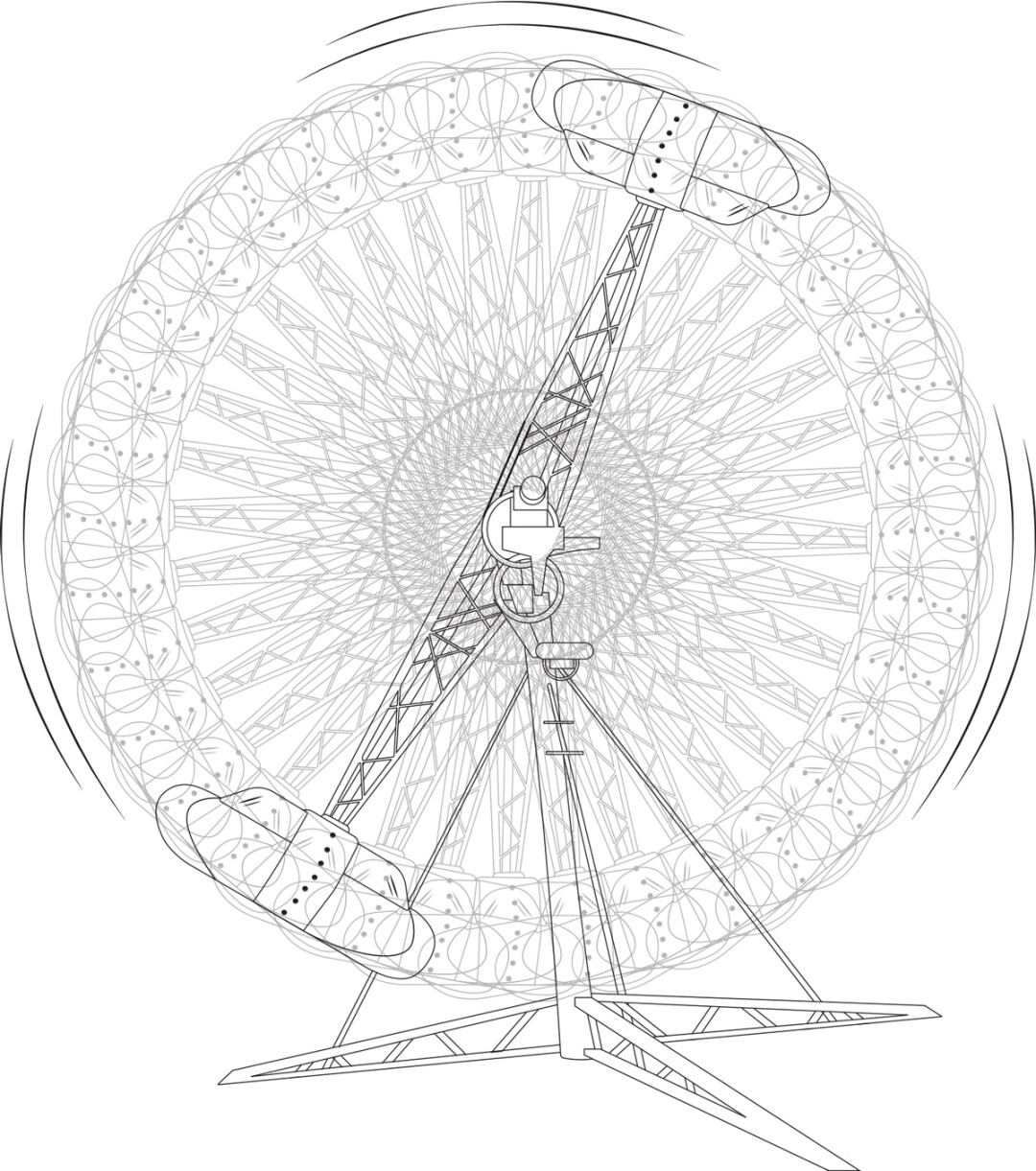The Bullet
aka the carnival ride i never rode
Mike Paulus, illustrated by Shannon Sorenson |

I never ever rode the thing. I was too scared, and my little paper tickets were too precious to waste on something I wasn’t sure I’d like. Far too precious to waste on something that could kill me.
Discounting the Ferris wheel, it was the tallest thing around, jutting up from the dark, magical carnival grounds – something ominous on the horizon. Neon stripes across the trussing, bright white light bulbs circling each fuselage.
They called it “The Bullet,” but it’s been known by other names. The Eyerly Aircraft Company of Salem, Oregon – which invented the thing – called it the “Roll-O-Plane.”
Like all carnival rides, the one I knew best was mounted on a trailer. Once the base was erected, a stretch of metal scaffolding could spin like sideways helicopter blades. They had bolted a capsule-shaped passenger cabin to each end. Each cabin could hold four people, two facing forwards, two facing backwards.
The whole thing spun around, the cabins would roll, corkscrewing the riders skyward, curving across the highest reaches before sending them straight down towards the hard-packed dirt and the dusty grass – only to swoop up again at the very last moment.
And as the whole thing spun around, the cabins would roll, corkscrewing the riders skyward, curving across the highest reaches before sending them straight down towards the hard-packed dirt and the dusty grass – only to swoop up again at the very last moment. The mechanical voodoo rolled you just so, and you were somehow never completely upside down.
The Bullet I remember from the Burnett County Fair of the 1980s was a million feet tall. With chipped paint and dented metal. It was worn down from years on the road and the never-ending shrieks of the kids brave enough to climb inside. Of all the rides I never wanted to ride, this was the king. I could imagine so many things going wrong. Axles breaking. Doors popping open. People flung into the air, sailing out over the corndog stand and the beer tent and the musty animal barn.
Many times I watched as The Bullet spun to life, clattering up into the night sky, whining and grinding and twirling against the stars. It was bright and loud and it made me dizzy.
The tickets I’d bought with the money my mom gave me were for other things. Cheaper things. Safer things. Ping-pong balls and goldfish bowls. Darts and balloons. Rings and 2-liter bottles of Mountain Dew. The red, white, and blue Tilt-A-Whirl.
What was I? Some kind of test pilot?
I guess you’d have to ask aviator, mechanic, and carnival entrepreneur Lee Eyerly of the aforementioned Eyerly Aircraft Company of the aforementioned Salem, Oregon.
From what I can tell, Eyerly made money manufacturing pilot training devices, but eventually realized how much more successful he could be converting his earth-based whirligigs into carnival rides. The first contraption he designed as an amusement ride was the Loop-O-Plane in 1931, followed soon by the Roll-O-Plane in 1934.
Obviously, many of the rides Eyerly produced were designed to re-create the thrilling, if queasy, sensations of airplane flight. The Roll-O-Plane simulated a half-loop, half-roll maneuver, which was popularized by German fighter ace Max Immelmann during World War I. Or so they say.
Invented on the East Coast in the 1930s, a latter-day Roll-O-Plane model eventually made it to the fairgrounds outside Webster, Wisconsin in the 1980s to stand tall and proud – and slightly menacing – before my awestruck, adolescent gaze.
How many trailer-mounted Roll-O-Planes have rumbled across our nation’s county fair circuits over the past century? How many people have screamed at the twists and dives? How many breathless smiles has it stretched across the faces of farmers’ kids and teenaged sweethearts?
Most of this data can never be mined. All I know for sure is that I never ever rode the thing. I was one of those kids, standing quiet at a distance, tickets in hand beneath a summertime moon, wondering if I’d ever outgrow my fear.
These are the things I still wonder about. Despite the occasional, horrible video posted by our national news, I know that life holds far more dangerous things than hastily constructed carnival rides. There are bigger things to overcome.
But I always go back to The Bullet, like it’s some kind of missed opportunity. What if I had just climbed inside to grip the metal safety bar and hope for the best? How different would I be?
And how different would my world have been once I touched back down?






















